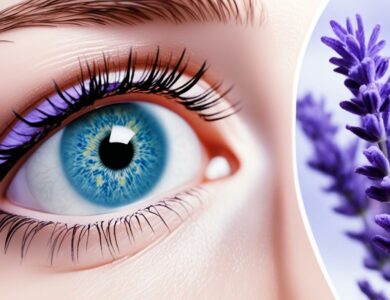
Dry eye syndrome is a common condition that affects millions of people worldwide. It occurs when the eyes do not produce enough tears or when the tears evaporate too quickly, leading to dryness and discomfort. In this article, we will explore the causes, symptoms, diagnosis, and treatment options for dry eye syndrome, as well as some tips for managing and preventing it.
What is Dry Eye Syndrome?
Dry Eye Syndrome refers to a condition in which the eyes fail to produce enough tears to keep the eyes adequately lubricated. Tears are essential for maintaining the health of the eyes and ensuring clear vision. When the tear production is insufficient or the tears evaporate too rapidly, the ocular surface becomes dry and irritated.
Causes of Dry Eye Syndrome
There are several causes of dry eye syndrome, including:
- Age: As we age, tear production tends to decrease, making older individuals more susceptible to dry eyes.
- Environmental Factors: Dry and windy environments can lead to increased tear evaporation, causing dry eyes.
- Medical Conditions: Certain medical conditions, such as diabetes, rheumatoid arthritis, and thyroid disorders, can contribute to dry eye syndrome.
- Medications: Some medications, including antihistamines, decongestants, and antidepressants, may reduce tear production.
Risk Factors
Certain factors can increase the risk of developing dry eye syndrome:
- Gender: Women are more likely to experience dry eyes, especially during hormonal changes, such as pregnancy or menopause.
- Extended Screen Time: Prolonged use of digital screens can lead to reduced blinking, causing the eyes to dry out.
Signs and Symptoms of Dry Eye Syndrome
Dry eye syndrome can manifest in various signs and symptoms, which may include:
- Dryness and Irritation: The eyes may feel dry, itchy, or scratchy.
- Redness and Swelling: The eyes may appear red and swollen due to inflammation.
- Sensitivity to Light: Individuals with dry eyes may be more sensitive to light.
- Blurred Vision: Vision may become temporarily blurred, especially during prolonged periods of reading or computer use.
Diagnosing Dry Eye Syndrome
If you suspect you have dry eye syndrome, it is essential to visit an eye doctor for a thorough examination. The diagnosis may involve the following:
- Eye Examination: The eye doctor will examine the eyes to check for signs of dryness and evaluate tear production.
- Tear Production Test: A Schirmer test may be performed to measure tear production.
- Tear Quality Test: The doctor may examine the quality of tears to determine if they are balanced and healthy.
Treatment Options
The treatment for dry eye syndrome depends on the severity of the condition and its underlying cause. Some common treatment options include:
- Artificial Tears: Over-the-counter artificial tear drops can help lubricate the eyes and relieve dryness.
- Prescription Eye Drops: In more severe cases, the doctor may prescribe medicated eye drops to reduce inflammation and promote tear production.
- Punctal Plugs: These tiny plugs can be inserted into the tear ducts to slow down tear drainage, keeping the eyes moist.
- Lifestyle Changes: Simple lifestyle adjustments, such as taking breaks during screen time and staying hydrated, can make a significant difference.
Managing Dry Eye Syndrome at Home
In addition to medical treatments, there are various home remedies that can alleviate dry eye symptoms:
- Humidifiers: Using a humidifier in your living space can add moisture to the air, preventing your eyes from drying out.
- Warm Compresses: Applying warm compresses over closed eyelids can help open up oil glands, improving tear quality.
- Blinking Exercises: Regularly blinking can spread tears evenly across the eyes and reduce dryness.
Prevention Tips
Preventing dry eye syndrome is possible by following these tips:
- Avoiding Environmental Triggers: Stay away from smoke, windy environments, and air conditioning that may dry out the eyes.
- Proper Screen Usage: Take regular breaks during screen time and practice the 20-20-20 rule (every 20 minutes, look at something 20 feet away for 20 seconds).
- Eyelid Hygiene: Keep your eyelids clean and free from debris to prevent eye irritation.
When to See an Eye Doctor
If you experience persistent dry eye symptoms that do not improve with over-the-counter remedies, it is crucial to see an eye doctor. They can diagnose the underlying cause and recommend appropriate treatments.
Dry Eye Syndrome and Contact Lenses
Individuals who wear contact lenses may be more prone to dry eye syndrome due to reduced oxygen flow to the eyes. It is essential to follow proper contact lens care and avoid wearing them for extended periods.
Dry Eye Syndrome and LASIK
Dry eye syndrome can be a temporary side effect after LASIK surgery. However, most cases resolve within a few months with proper post-operative care.
The Connection Between Dry Eye Syndrome and Aging
As we age, the risk of developing dry eye syndrome increases. Age-related changes in tear production and quality contribute to this condition.
Impact on Daily Life
Dry eye syndrome can have a significant impact on daily activities:
- Work Productivity: Individuals with dry eyes may experience difficulty focusing at work, affecting productivity.
- Driving: Dry eyes can lead to discomfort while driving, potentially affecting vision.
- Mental Well-being: Chronic dry eye symptoms can lead to frustration, anxiety, and a decreased quality of life.
Conclusion
Understanding dry eye syndrome is crucial for managing and preventing this common eye condition. By recognizing the signs and symptoms, seeking timely medical attention, and implementing lifestyle changes, individuals can find relief from dry eyes and enjoy clear and comfortable vision.
Frequently Asked Questions (FAQs)
- Is dry eye syndrome permanent? Dry eye syndrome can be managed effectively with appropriate treatment. In most cases, it is not a permanent condition.
- Can allergies cause dry eye syndrome? Yes, allergies can contribute to dry eye syndrome by increasing inflammation in the eyes.
- Are there any home remedies for dry eyes? Yes, using humidifiers, warm compresses, and blinking exercises can help alleviate dry eye symptoms.
- Can dry eye syndrome affect children? Yes, although it is more common in adults, children can also experience dry eye syndrome.
- Can diet affect dry eye syndrome? Yes, a diet rich in omega-3 fatty acids may promote eye health and reduce dryness.



